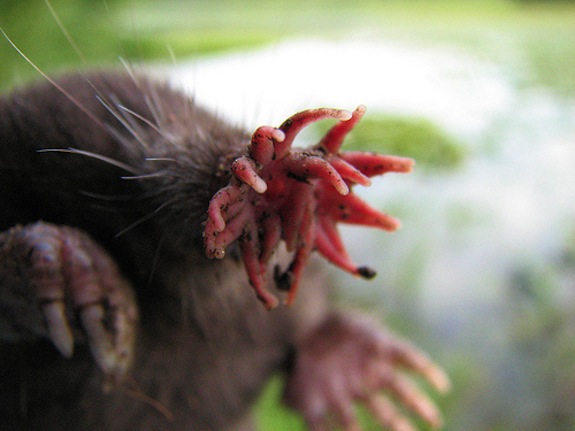Watch How Fast the Insane Snout of the Star-Nosed Mole Can Move
To many, the star nosed mole is alternatively horrifying and fascinating, but have you ever seen the little rodent’s face in action?

Image: gordonramsaysubmissions
You may have heard about star-nosed moles—those little furry beasts with an array of pink, fingerlike tentacles sticking off the end of their faces. Just looking at a picture of one can be both horrifying and fascinating. But have you ever seen the little rodent’s face in action?
Here’s what those 22 little tentacles (also called rays) look like on the go:
And, much to the chagrin of platypus fans out there, National Geographic even called the poor thing “The World’s Weirdest Creature” :
The moles move their wacky nostrils so much, apparently, because it’s the primary way they experience the world. Just like we move our eyes around all the time to see, the star-nosed mole maneuvers its tentacles about to sense the world around it. Kenneth C. Catania, who’s been studying the star-nosed mole for twenty years now, has this to say about is fleshy face:
The star-nosed mole’s “nose” is not an olfactory organ, but a skin surface that mediates touch. Innervated by more than 100,000 sensory neurons, the star is probably the most sensitive and highly acute touch organ found on any mammal. Under a scanning electron microscope, the skin surface resolves into a cobbled landscape covered with tens of thousands of tiny epidermal domes. Each is about 60 µm in diameter, and each contains a circular disk in its center. Known as Eimer’s organs, these sensory protrusions cover the entire surface of the star’s 22 appendages. In total, a single star contains about 25,000 domed Eimer’s organs, each one served by four or so myelinated nerve fibers and probably about as many unmyelinated fibers. This adds up to many times more than the total number of touch fibers (17,000) found in the human hand—yet the entire star is smaller than a human fingertip.
All this sensory input is what helps the mole navigate its burrows and find tasty worms to eat. But it’s also the thing that might give some people nightmares.
More from Smithsonian.com:
How the Star-Nosed Mole ‘Sees’ With Its Ultra-Sensitive Snout
/https://tf-cmsv2-smithsonianmag-media.s3.amazonaws.com/accounts/headshot/Rose-Eveleth-240.jpg)
/https://tf-cmsv2-smithsonianmag-media.s3.amazonaws.com/accounts/headshot/Rose-Eveleth-240.jpg)